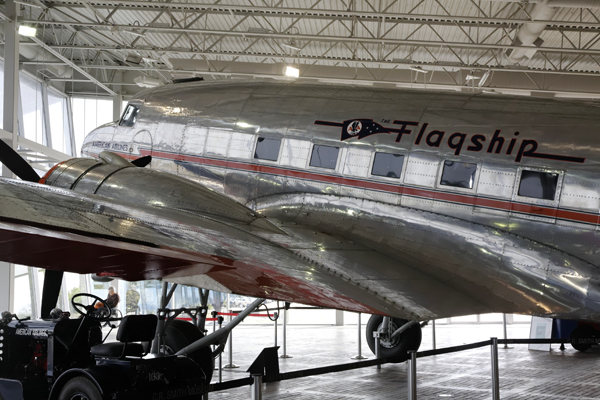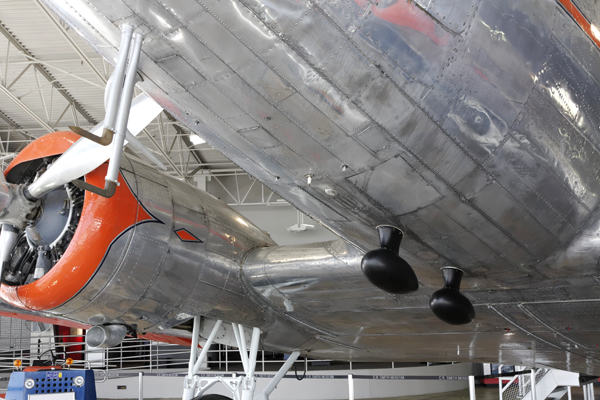Flagship Knoxville — an American Airlines Douglas DC-3
9 JANUARY 2013
Flagship Knoxville — an American Airlines Douglas DC-3
The American Airlines C.R. Smith Museum has many excellent exhibits as well as displays — as described in the previous post — but, perhaps, the showstopper is a pristine Douglas DC-3 which has been christened Flagship Knoxville. This particular DC-3 began service with American Airlines, which became prominent under C.R. Smith’s management and who prompted Douglas to upsize the DC-2 into the DC-3, served in the U.S. military during WW II as well as with another airline before purchase and restoration by retired American Airline flight crew. C.R. Smith named airline aircraft after cities and beginning with “Flagship” as a custom — hence, Flagship Knoxville.
C.R. Smith is especially noted for motivating Donald Douglas to design and build the DC-3. He wanted to build a transcontinental airline and his calculations indicated the need for an aircraft a bit larger and longer ranged than the successful DC-2. The DC-3 came to be the primary aircraft for American Airlines where it became the first transcontinental airliner in 1933.
This is a spectacular aircraft to see, not only because of the factory new condition but also because the interior can also be viewed — unusual to experience in a museum. Entry is through the main door on the right fuselage side. Once on the cabin floor the visitor can open the lavatory door on the left to see the lav is only slightly more modern than a primitive camp restroom, though a small skylight is a nice touch lost on today’s airliners, while ahead against the left side fuselage is the galley. Viewing into the aft baggage compartment is possible as well though entry is barred. Walking up a slight incline through the passenger cabin one sees two-on-the-left-one-on-the-right passenger seating as well as overhead shelves until reaching the cockpit bulkhead. Entry into the cockpit is not allowed but viewing is easy and satisfying as all the controls are well in view. Looking to the floor immediately below and on the left shows the emergency egress for the crew — a tight channel to a hatch and rope which would be used by the crew to gain immediate access to the ground.

Leaving no doubt that this is the Flagship Knoxville of American Airlines, note the emergency hatch behind the cockpit — photo by Joseph May

American Airlines “Flagship Knoxville”, a Douglas DC-3, in the American Airlines CR Smith Museum — photo by Joseph May

Left aspect view showing the polished aluminum metal with orange trim livery of earlier American Airlines airliners — photo by Joseph May

The cockpit, though the control wheels are hard left the ailerons are in their neutral positions, but this is a good look to better view the control panel (kudos) — photo by Joseph May

The interior of the Flagship Knoxville can be entered by the visitor, the galley is in view and the lav is immediately to the left against the right side — photo by Joseph May
The previous post, Monday’s, described the American Airlines C.R. Smith Museum with photographs as well as text — and the next post, Friday’s, describes the architecturally significant hangar first used by American Airlines.





No comments:
Post a Comment